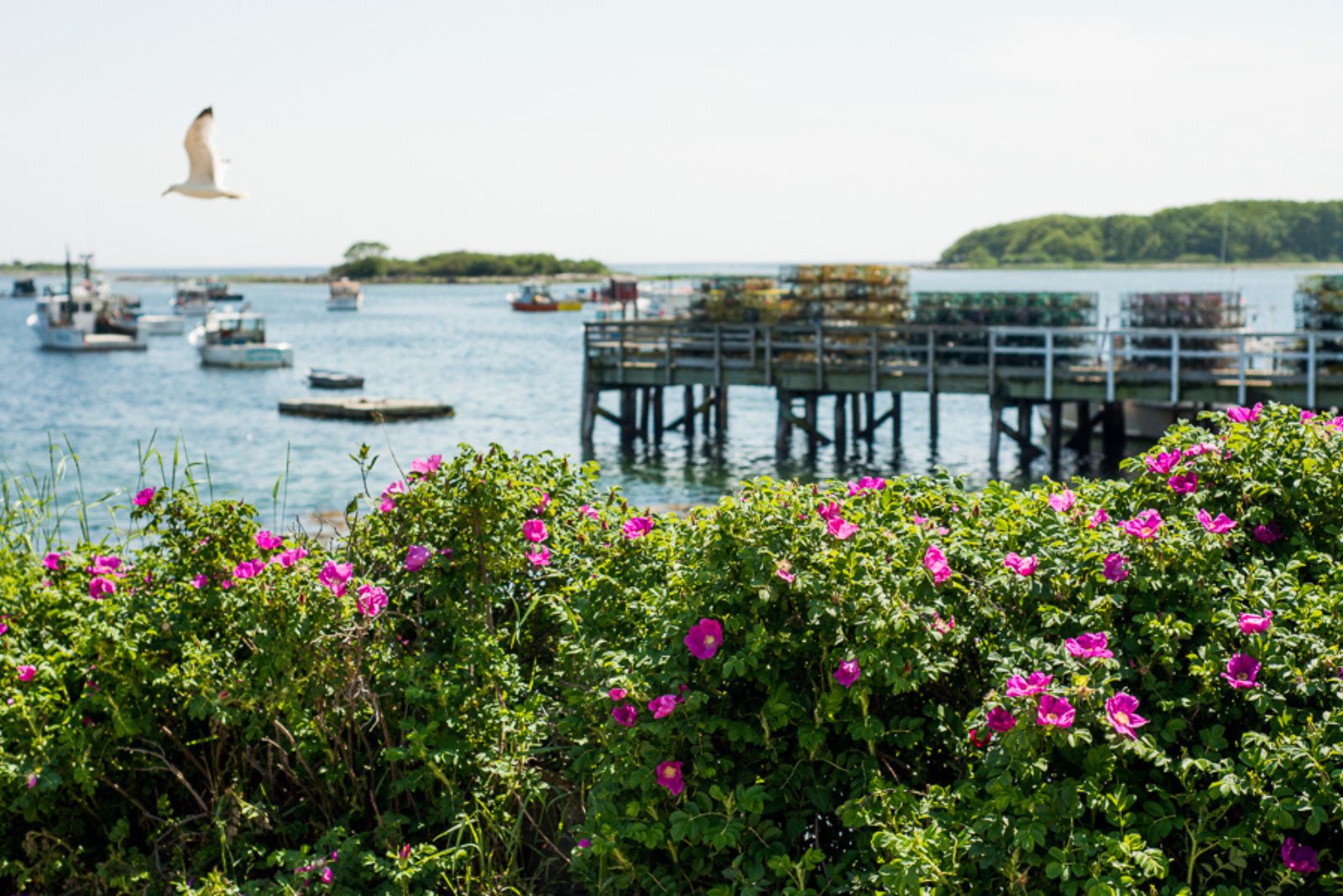When we think of a rose, perhaps its fragrance takes us to the 50s or to the Queen Mary’s Garden in London.
But it certainly doesn’t have us thinking about roses as invasive species. And yet, that’s exactly what Rosa rugosa (beach or Japanese rose) is to Maine.
It originated in Asia but spread all over the coast of Maine, suppressing the natives of that area.
So what can we do about it? Should we destroy it completely? Let’s find out!
Beach Rose In Maine
The Beach or Japanese rose has an incredible ability to withstand salt and sand in the soil, which is why it thrives all over the coast of Maine. In 2019, it got invasive status in Maine. (1)
However, even though it spreads widely along the coast, it doesn’t mean that there isn’t a place for this plant where it doesn’t hurt the ecosystem.
It is perfect for the inland, parking lots, and other places where the salt content in the soil is too high for other plants to tolerate it. And these areas are usually localized and bordered, so the beach rose would be controlled more easily.
In these locations, the beach rose can actually help the ecosystem, inviting more pollinators and reducing erosion. And that’s why it got a unique classification – invasive species of special concern. (2)
During the five-year review from which this plant got its own category, 273 plants were reviewed to decide if some of them should be on the sales ban list.
The goal was to ban certain species if they were endangering the ecosystem, and the number of banned plants was doubled in last year’s assessment.
Invasive Plants Threaten The Ecosystem
Believe it or not, most of Maine is covered in forests and they need diversity to flourish. And a great part of forest health depends on the undergrowth.
Invasive plants, including the beach rose, can suppress the undergrowth (understory) and pose a serious threat to forests.
They can take over the forest floor and deprive the soil of nutrients and space that native shrubs, trees, and ferns would be using instead.
Maine is proactively tackling this issue with its bans, but that may not be the most effective way. According to one study, 61% of 1285 invasive plant species are still sold all across the US. (3)
Maine stakeholders created a watchlist for certain plants that haven’t been put on the do-not-sell list because of lack of evidence. However, they will review these plants as well the next time there is an Invasive Plant Rule.
Gary Fish, member of the Maine Invasive Terrestrial Plant Stakeholder Review Committee and a state horticulturist, does everything in his power to spread the word on plant invasives.
He hopes for new DNA testing which would quickly reveal whether a certain species is invasive or not. However, it is usually the climate and weather-related phenomena that spread the invasive species and not human cultivation.
Reducing Their Population
So what can we do to combat the negative effects of invasive plant species on local ecosystems?
One way is to educate the public and make them aware of what a certain species can do to their yard, from starving caterpillars to creating unfavorable conditions for songbirds and other wildlife.
However, we simply can’t affect the movement of winds and water, which are the main means of dispersing and spreading invasive species.
Not even plant bans can help in this case because they can’t control nature and its elements. But, they can slow things down a bit, which is a small victory.
The committee will hold the next meeting in 2027, where they will discuss the invasive list, all the data they have, and the benefits of the bans.
The list of invasive plant species may not double in size yet again, but it will affect the buyers and sellers, who are onboard with it.
Nancy Olmstead, who led Maine’s terrestrial and wetland invasive plant program, says that the plant buyers and sellers want to help as much as they can, not create additional problems.
References:
1. Rugosa Rose (Beach Rose): Rosa rugosa (n.d.). Maine Department of Agriculture, Conservation & Forestry.
2. Invasive Plants (n.d.). Maine Department of Agriculture, Conservation & Forestry.3. Beaury, E. M., Patrick, M., & Bradley, B. A. (2021). Invaders for Sale: The Ongoing Spread of Invasive Species by the Plant Trade Industry. Frontiers in Ecology and the Environment.



